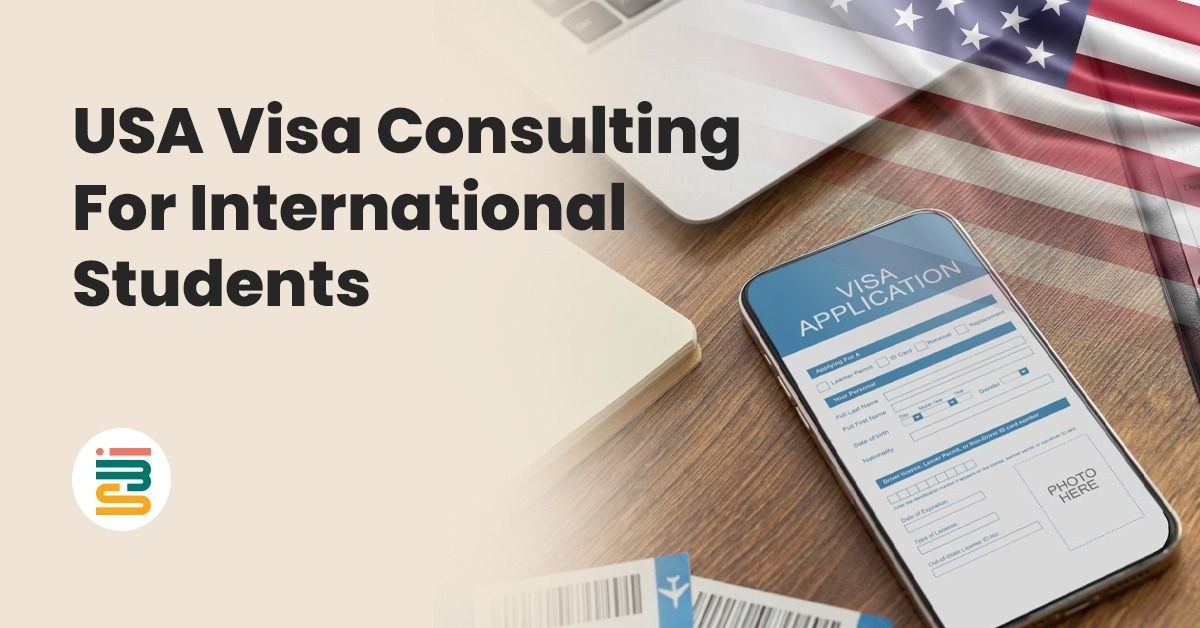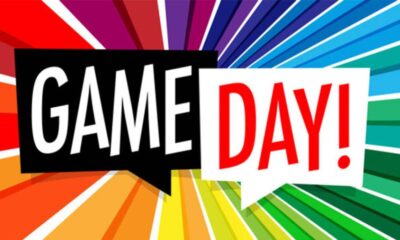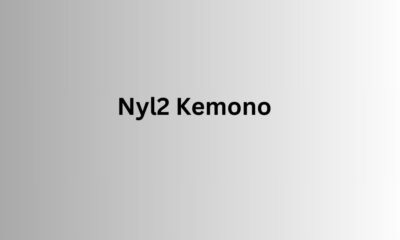EDUCATION
The Complete Salesforce Certification Path: From Beginner to Expert

If you’re eyeing a career in tech or looking to level up in your current job, Salesforce certs are worth considering. This isn’t just a passing trend — they’re in demand because businesses need people who know how to use Salesforce to get the most out of it. It’s more than just knowing how to click around in the system. It’s about understanding the bigger picture, optimizing processes, and delivering value quickly.
Salesforce is used by some of the largest companies worldwide. If you can prove you have the skills to maximize its potential, you’re opening doors to jobs in a wide range of industries. So, why do certs matter? In simple terms, they make you more marketable. If you’re looking for a new job or aiming to get promoted, having a Salesforce cert shows you’ve got the expertise to back up your skills.
It’s not just about having a badge to show off. Salesforce certs are hands-on proof that you understand the platform — and businesses are more likely to hire you or give you the next big opportunity because of that.
Decoding the Salesforce Certification Landscape: Different Tracks for Different Goals
Salesforce offers a bunch of certs, and they’re not all the same. There are paths for everyone, whether you’re a total beginner or an experienced developer. So, what’s the deal with the tracks?
First up, there’s the Administrator track, which is perfect for those starting. If you’re someone who likes organizing, managing systems, and improving efficiency, this one’s for you. Then, if you’re more into the nuts and bolts of coding and developing Salesforce apps, there’s the Developer track — here, you’re building and customizing Salesforce apps. Not to forget the Consultant track for those who prefer advising clients on how best to use Salesforce.
It’s essential to figure out your career goals early on. If you’re thinking of working more on the back-end, development, or system integration, the Developer or Architect paths might be the ones to focus on. If you’re all about the bigger business picture, then the Administrator or Consultant tracks could be your best bet.
In a nutshell, Salesforce’s certification tracks cater to various roles. Knowing which one fits you best from the start will save you time and effort as you progress.
Choosing Your First Salesforce Certification: The Beginner’s Guide
If you’re new to Salesforce, the first question you’re probably asking is, “Where do I start?” The answer, most likely, is the Salesforce Administrator Cert (CRT-251). Here’s why — it’s the foundation of all Salesforce certs and gives you a strong base to build on. You don’t have to be a developer to be an admin, but you’ll learn the essentials of customizing Salesforce, managing users, and automating workflows. These are the skills you need to know, no matter what path you take later.
When you go for the CRT-251 exam, expect to deal with things like managing data, automating tasks, and setting up security features. The exam itself isn’t impossible, but it does take some prep. You’ll need to understand how Salesforce works from the inside out, so make sure you focus on hands-on practice, too.
If you’re looking to fast-track your preparation, consider using CRT-251 exam dumps. These can help familiarize you with the format and types of questions you’ll face, giving you a better idea of what to expect and how to manage your time effectively during the exam.
How long does it take to pass this exam? It varies, but most people take around 2-3 months to prepare if they’re studying consistently. The exam is multiple-choice, with 60 questions, and you’ll need 65% to pass. It’s not about memorizing answers but about understanding how Salesforce works.
Beyond Administration: Exploring Specialized Salesforce Certifications
Once you’ve got the admin stuff down, you might start feeling ready to specialize in something more niche. Salesforce offers several specialized certs to help you do just that. If you like the sound of coding and developing applications, the Salesforce Developer cert is a solid choice. It focuses on things like building custom applications, understanding Apex code, and managing the technical side of Salesforce.
For those who see themselves as consultants, there’s the Salesforce Consultant track. Whether it’s Sales Cloud, Service Cloud, or Marketing Cloud, this path will prepare you to help businesses set up Salesforce to meet their unique needs. You’ll get to advise on the best practices and help configure Salesforce so it works efficiently for the business.
On top of those, there’s the Salesforce Architect track, which is much more advanced. Architects are the ones who design large, complex Salesforce systems for big companies. It’s a role that requires deep knowledge of Salesforce, and passing certs like the Salesforce Certified Technical Architect could be a long-term goal if you’re thinking about taking your career to the next level.
And don’t forget Salesforce CPQ (Configure, Price, Quote) or Marketing Cloud certs for those looking to specialize in specific Salesforce tools.
The Deep Dive: Advanced Salesforce Certifications for Mastery
Alright, you’ve got the basics covered. But what happens if you’re ready to dive deeper? This is where advanced Salesforce certs come into play. Let’s say you’re looking to become a Salesforce Technical Architect. That’s where the real mastery of the platform shows. The advanced exams, like the Salesforce Certified Technical Architect exam, are tough — you’re dealing with more complex systems, integrations, and large-scale solutions.
When you reach this stage, you’ll find that passing these exams is more about problem-solving than memorizing facts. You’ll be tested on your ability to design and implement Salesforce solutions for large, enterprise-level businesses. This isn’t something you can learn overnight, but after a few years of hands-on experience and studying, you’ll be able to think like an architect and build solutions that solve real-world business problems.
Advanced certs like CRT-450, a Salesforce Developer cert, also push you further into more specific areas of Salesforce, focusing on coding, programming, and app customization. If you want to take on senior-level dev roles, this is your next step.
Preparing for the Salesforce Certification Exams: Tips and Resources for Success
When it comes to preparing for any Salesforce exam, especially the CRT-251 or CRT-450, there’s no one-size-fits-all approach. You’ve got to figure out what works for you, but here’s a basic roadmap:
- Understand the Exam Blueprint: Before you start studying, take a good look at the exam guide or blueprint. It breaks down all the key areas you’ll be tested on and gives you a roadmap for your prep. For example, the CRT-251 exam focuses on things like user setup, security, and automation, so you know exactly where to direct your study time.
- Use Salesforce’s Trailhead: If you’re not already using Salesforce’s free online training platform, Trailhead, you’re missing out. It offers guided learning paths for each certification and includes hands-on challenges that will help you get comfortable with the platform.
- Study in Chunks: Instead of trying to cram everything in, break down the material into bite-sized chunks. This will make it easier to retain information and stay motivated.
- Practice Tests: Once you’ve gone through the material, it’s time to put your knowledge to the test. Practice exams will help you get familiar with the format and pinpoint areas you need to improve.
- Get Hands-On: Practice, practice, practice. Try to get as much hands-on time with Salesforce as possible. Set up a free Developer Edition account and get to work building reports, creating automation, and exploring features. This will give you the confidence you need for the real exam.
For CRT-251, look for practice exams that simulate real-life admin scenarios. For CRT-450, focus on coding and development challenges that will prepare you for those tricky developer questions.
Real-World Skills Gained Through Salesforce Certifications
So, what do you actually gain from these certs? A lot. For starters, you get practical, job-ready skills that you can apply immediately. With the CRT-251 exam, you’ll understand how to set up security, build reports, and automate tasks. For CRT-450, you’ll be able to create custom applications, integrate systems, and work with Apex code to automate processes.
These skills are essential for working with clients or companies who rely on Salesforce to manage their operations. So, whether you’re just starting with Salesforce or you’re a seasoned developer, these certs will give you the tools to make a real impact.
How to Leverage Your Salesforce Certification for Career Growth
Getting certified isn’t just about the cert on your resume. It’s about how you use it to propel your career forward. The CRT-251 or CRT-450 certs can help you land interviews, stand out from the competition, and move up the career ladder.
Use platforms like LinkedIn to showcase your Salesforce skills and certifications. Also, attend Salesforce events like Dreamforce or community meetups to network with other certified professionals and stay updated with the latest trends.
Finally, don’t stop after passing your exam. Salesforce is always evolving, and staying up-to-date with new features and technologies is a must. Continuing education will keep you relevant in the job market.
Frequently Asked Questions About Salesforce Certification Paths
People always have a lot of questions when it comes to Salesforce certs. Here are some of the most common ones that come up, along with clear answers.
What is the best Salesforce certification for beginners?
For beginners, the Salesforce Administrator (CRT-251) certification is usually the best starting point. It covers the basics of Salesforce — from managing users to automating tasks. Plus, it’s foundational, so it’s easier to build your skills from here.
How long does it take to prepare for a Salesforce certification exam?
On average, it can take anywhere from 2 to 4 months to prepare, depending on your prior experience and the amount of time you can dedicate to studying. If you’re new to Salesforce, give yourself more time to get familiar with the platform and its core concepts. A good rule of thumb is to aim for 10-12 hours of study per week.
How much do Salesforce certifications cost?
The cost varies depending on the certification. For instance, the CRT-251 exam (Administrator) costs about $200, while the CRT-450 exam (Developer) costs roughly the same. Some exams, like the more advanced Architect ones, can be more expensive. If you’re in the U.S., be aware that there are also taxes added to the exam fees.
Are Salesforce certifications worth it for non-technical professionals?
Absolutely! Salesforce isn’t just for developers. Admins, consultants, and even marketers can benefit from Salesforce certs. For example, the CRT-251 cert can make you more competitive if you’re looking to work in customer relationship management (CRM), process automation, or data management, which are skills needed in many industries.
How often do you need to renew Salesforce certifications?
Salesforce certifications are valid for 3 years. After that, you’ll need to complete the required maintenance modules through Salesforce’s Trailhead platform. This is typically just a matter of completing some short, online training that’s free of charge. It keeps your skills up to date and ensures you’re familiar with any new features or updates to the platform.
What is the Salesforce CRT-251 exam about, and who should take it?
The CRT-251 exam is the go-to certification for those interested in becoming a Salesforce Administrator. It’s focused on the essentials of Salesforce administration: user setup, security settings, automation, and reporting. It’s perfect for anyone wanting to work as an admin — managing Salesforce users, data, and processes.
How can I pass the Salesforce CRT-450 exam? What are the key preparation strategies?
To pass the CRT-450, you need to be comfortable with development concepts like Apex programming, Visualforce, and Lightning components. The best preparation method is to practice coding and work on real-life projects. Take full advantage of Salesforce’s Trailhead modules on development and use the hands-on challenges to solidify your skills. Mock exams are also incredibly useful, as they’ll familiarize you with the types of questions you’ll face.
Bringing It All Together: Your Salesforce Journey
Let’s step back for a moment. You’ve read all about Salesforce certifications and how they can help you level up your career. Whether you’re eyeing the CRT-251 (Administrator) or the CRT-450 (Developer), or you’re aiming for more advanced certs, the key takeaway is this: Salesforce certs open doors.
They set you apart in an increasingly competitive job market, showcasing that you have not only the knowledge but the hands-on ability to make things happen with Salesforce. These certs aren’t just badges of honor; they represent tangible, real-world skills that companies need and appreciate.
For those going for the CRT-450 exam, using CRT-450 dumps can be a great way to test your knowledge and get a feel for the types of questions that might come up. This can really help you hone your skills and improve your chances of passing the exam on the first try.
Take your time and choose your certification path carefully. Your Salesforce journey will likely evolve as you learn, and there’s always room to grow. From the beginner-friendly CRT-251 to the advanced CRT-450, or even more specialized certs, you’re bound to find a path that aligns with your career goals.
Remember, it’s not about rushing to get certified — it’s about building a strong foundation and gaining the expertise needed to succeed in a Salesforce-driven world. And with the right study resources and some dedication, there’s no reason you can’t crush your exams and unlock the doors to exciting job opportunities.
EDUCATION
Documentation requirements and best practices for ISO 27001 certification

ISO 27001 certification demands comprehensive documentation that proves your organization’s commitment to information security. Without proper documentation, achieving certification becomes impossible, regardless of how robust your security measures are in practice. This requirement extends far beyond simple paperwork—it forms the backbone of your entire Information Security Management System (ISMS).
Essential documentation framework
The standard requires specific documents that auditors will scrutinize during certification assessments. Your ISMS must include documented policies, procedures, and records that demonstrate compliance with all 114 controls across 14 domains. This comprehensive approach ensures every aspect of your security program receives proper attention and verification.
Building on this foundation, policy documentation serves as the cornerstone of your certification efforts. You need an overarching information security policy approved by top management, plus supporting policies for access control, incident management, business continuity, and risk management. These policies must reflect your organization’s actual practices rather than generic templates copied from external sources.
Furthermore, risk assessment documentation proves you’ve identified threats, vulnerabilities, and impacts systematically. This includes detailed asset inventories, comprehensive threat catalogs, thorough vulnerability assessments, and strategic risk treatment plans. Auditors expect to see evidence of regular risk reviews and updates that demonstrate ongoing vigilance and adaptation to changing circumstances.
Demonstrating control implementation
Moving from policy to practice, each applicable control requires documented procedures and implementation evidence. Access control procedures must detail user provisioning processes, privilege management protocols, and access review mechanisms. Similarly, incident response procedures need clear escalation paths, defined communication protocols, and structured recovery steps that teams can follow during actual security events.
In addition to procedural documentation, training records demonstrate employee awareness and competency levels across your organization. These include security awareness sessions, role-specific training programs, and competency assessments that validate understanding. Documentation should clearly show who received training, when sessions occurred, and how effectiveness was measured and verified.
Understanding who needs iso 27001 certification helps organizations determine the scope and depth of documentation required for their specific industry and risk profile.
Structuring your documentation system
To manage this extensive documentation effectively, structure your documents hierarchically for maximum clarity and accessibility. Level 1 contains your main ISMS policy that sets organizational direction. Level 2 includes supporting policies and procedures that operationalize your security framework. Level 3 covers detailed work instructions and practical guidelines for daily operations. Level 4 contains records and evidence that prove implementation and effectiveness.
Consequently, version control prevents confusion during audits and maintains document integrity over time. Implement a systematic approach for document approval, review, and updates that ensures accuracy and currency. Each document needs clear ownership assignments, established review schedules, and robust change control processes that track modifications and their rationale.
Leveraging digital solutions
Modern organizations can significantly benefit from centralized document management systems that streamline compliance efforts. These platforms provide automated version control, granular access controls, and comprehensive audit trails that satisfy regulatory requirements while reducing administrative burden.
Moreover, automated evidence collection strengthens your documentation approach by reducing manual effort and human error. Security tools can generate reports, logs, and metrics that support your compliance claims with real-time data. This technological approach provides continuous visibility into control effectiveness while building a robust evidence base for certification.
Organizations implementing frameworks like trust service criteria soc 2 often find complementary documentation approaches that can enhance their ISO 27001 preparation.
Avoiding critical documentation mistakes
Despite best intentions, generic documentation consistently fails audit scrutiny. Avoid copying templates without substantial customization to reflect your organization’s unique environment and practices. Your documentation must demonstrate actual organizational behaviors rather than theoretical frameworks that exist only on paper.
Similarly, inconsistent documentation creates significant audit risks that can derail certification efforts. Ensure your policies, procedures, and records align with each other and present a coherent picture of your security program. Contradictory statements between documents raise serious questions about implementation effectiveness and organizational commitment.
Preparing for successful audits
As certification approaches, organize documentation logically before audits begin to demonstrate professionalism and preparedness. Create clear cross-references between related documents that help auditors understand relationships and dependencies. Prepare comprehensive evidence packages that demonstrate control implementation over extended periods rather than isolated point-in-time snapshots.
To support this preparation, regular internal reviews identify gaps before external audits and prevent last-minute discoveries. Schedule quarterly documentation reviews focusing on completeness, accuracy, and alignment with evolving business requirements. This proactive approach prevents scrambling during the certification process while building organizational confidence in your documentation quality.
Maintaining long-term effectiveness
Documentation excellence requires ongoing attention and systematic maintenance to remain valuable and current. Business changes, technology updates, and lessons learned from security incidents should trigger appropriate document reviews and updates. Establish clear triggers for modifications and assign specific responsibility for maintenance activities to ensure continuity.
Finally, performance metrics help optimize documentation processes and demonstrate continuous improvement. Track document review cycles, update frequency patterns, and audit finding trends to identify optimization opportunities. This data-driven approach helps allocate resources effectively while ensuring your documentation system evolves with organizational needs.
Effective ISO 27001 documentation balances thoroughness with practicality, focusing on documents that add genuine value to your security program while meeting certification requirements. Well-maintained documentation becomes a valuable business asset that supports strategic decision-making and demonstrates security maturity to stakeholders, clients, and regulatory bodies.
EDUCATION
Study in the USA: Application Tips from a Consultant’s Perspective

Studying in the USA is a dream for many international students due to its world-class education system, diverse culture, and numerous career opportunities. However, applying to American universities can be a complex and competitive process. From my experience working with students and study abroad consultants, I’ve gathered some valuable tips that can help you navigate the application journey smoothly and increase your chances of acceptance. In this blog, I’ll share application tips from a consultant’s perspective to guide you step-by-step.
1. Start Early and Plan Ahead
One of the most common mistakes students make is starting their application process too late. The US university application process involves multiple steps—including researching universities, preparing documents, taking standardized tests, and applying for visas—that can take months to complete. Starting early gives you ample time to gather all necessary materials, improve your test scores if needed, and avoid last-minute stress.
Study abroad consultants often emphasize the importance of early preparation because it allows students to carefully select universities that best fit their academic and personal goals rather than rushing into decisions.
2. Research Universities and Programs Thoroughly
The USA has thousands of universities offering a wide range of programs. It’s crucial to research and shortlist universities that align with your academic interests, career goals, budget, and lifestyle preferences. Don’t just focus on rankings; consider factors like faculty expertise, internship opportunities, campus culture, and location.
Consultants help students create a balanced list of universities, including “target,” “safety,” and “dream” schools. This strategy maximizes your chances of acceptance and scholarship opportunities. Applying to multiple universities also gives you options to compare offers and choose the best fit.
3. Understand and Meet Admission Requirements
Each university and program may have different admission criteria. Common requirements include academic transcripts, standardized test scores (SAT, ACT for undergraduates; GRE, GMAT for graduates), English proficiency tests (TOEFL, IELTS, or Duolingo), letters of recommendation, and a personal statement or essay.
Make sure you understand the specific requirements of each university on your list. Missing or incomplete documents can lead to delays or rejection. Study abroad consultants can guide you on how to prepare and present these documents effectively to meet university expectations.
4. Prepare a Strong Personal Statement
Your personal statement or Statement of Purpose (SOP) is your chance to tell the admissions committee who you are beyond your grades. Many students underestimate its importance or submit generic essays that don’t reflect their unique qualities or motivations.
A strong personal statement should clearly explain why you want to study your chosen program, how it fits your career goals, and why you selected that particular university. Mention any relevant experiences, achievements, or challenges that shaped your academic journey. Consultants often help students draft, review, and polish their essays to make them compelling and authentic.
5. Take Standardized Tests Seriously
Standardized tests like the SAT, ACT, GRE, or GMAT are important components of your application. Preparing well for these tests can significantly improve your chances of admission and scholarships. Also, English language proficiency tests such as TOEFL or IELTS are mandatory for most international students.
Register for these tests early and give yourself enough time to retake them if needed. Many universities also accept Duolingo English Test scores, which can be taken online and offer flexibility. Knowing the test requirements for each university helps you avoid surprises later in the process.
6. Pay Attention to Application Deadlines
US universities have different application deadlines, including early decision, early action, regular decision, and rolling admissions. Missing deadlines can mean waiting an entire year to apply again.
Create a detailed calendar with all deadlines for applications, financial aid, scholarships, and visa submissions. Starting early and staying organized is key to submitting complete and timely applications.
7. Secure Strong Letters of Recommendation
Letters of recommendation provide insight into your academic abilities, character, and potential from the perspective of teachers, counselors, or employers. Choose recommenders who know you well and can speak positively about your strengths and achievements.
Provide your recommenders with enough time and information about your goals so they can write detailed and personalized letters. Consultants often advise students on how to select recommenders and how to request letters professionally.
8. Prepare for the Visa Process
Getting a student visa for the USA (usually an F-1 visa) is a critical step after admission. The visa process requires careful preparation of documents such as your I-20 form (issued by the university), financial proof, passport, and visa application forms.
Study abroad consultants can assist you with visa application procedures, help you prepare for visa interviews, and keep you updated on any policy changes. Starting the visa process early reduces the risk of delays that could affect your travel plans.
9. Plan Your Finances Wisely
Studying in the USA can be expensive, so it’s important to plan your finances carefully. Besides tuition fees, consider living expenses, health insurance, travel costs, and personal spending.
Look for scholarships, assistantships, and financial aid options offered by universities. Study abroad consultants often help students identify scholarships they might qualify for and guide them through the application process.
10. Take Advantage of Pre-Departure Support
Before you leave for the USA, make sure you have all your documents organized, including your passport, visa, university admission letter, accommodation details, and health insurance.
Many consultants provide pre-departure briefings covering topics like travel arrangements, accommodation, banking, and cultural adjustment. This support helps reduce anxiety and ensures you are well-prepared for your new life abroad.
Final Thoughts
Applying to universities in the USA can be challenging, but with the right approach and support, you can make the process manageable and successful. Study abroad consultants play a vital role in helping students understand requirements, prepare strong applications, and navigate the complexities of admissions and visas. Their expertise can save you time, reduce stress, and increase your chances of acceptance.
By starting early, researching thoroughly, preparing carefully, and seeking expert advice when needed, you can turn your dream of studying in the USA into reality. Remember, every step you take now is an investment in your future.
EDUCATION
Study in the USA: Application Tips from a Consultant’s Perspective

Studying in the USA is a dream for many international students due to its world-class education system, diverse culture, and numerous career opportunities. However, applying to American universities can be a complex and competitive process. From my experience working with students and study abroad consultants, I’ve gathered some valuable tips that can help you navigate the application journey smoothly and increase your chances of acceptance. In this blog, I’ll share application tips from a consultant’s perspective to guide you step-by-step.
1. Start Early and Plan Ahead
One of the most common mistakes students make is starting their application process too late. The US university application process involves multiple steps—including researching universities, preparing documents, taking standardized tests, and applying for visas—that can take months to complete. Starting early gives you ample time to gather all necessary materials, improve your test scores if needed, and avoid last-minute stress.
Study abroad consultants often emphasize the importance of early preparation because it allows students to carefully select universities that best fit their academic and personal goals rather than rushing into decisions.
2. Research Universities and Programs Thoroughly
The USA has thousands of universities offering a wide range of programs. It’s crucial to research and shortlist universities that align with your academic interests, career goals, budget, and lifestyle preferences. Don’t just focus on rankings; consider factors like faculty expertise, internship opportunities, campus culture, and location.
Consultants help students create a balanced list of universities, including “target,” “safety,” and “dream” schools. This strategy maximizes your chances of acceptance and scholarship opportunities. Applying to multiple universities also gives you options to compare offers and choose the best fit.
3. Understand and Meet Admission Requirements
Each university and program may have different admission criteria. Common requirements include academic transcripts, standardized test scores (SAT, ACT for undergraduates; GRE, GMAT for graduates), English proficiency tests (TOEFL, IELTS, or Duolingo), letters of recommendation, and a personal statement or essay.
Make sure you understand the specific requirements of each university on your list. Missing or incomplete documents can lead to delays or rejection. Study abroad consultants can guide you on how to prepare and present these documents effectively to meet university expectations.
4. Prepare a Strong Personal Statement
Your personal statement or Statement of Purpose (SOP) is your chance to tell the admissions committee who you are beyond your grades. Many students underestimate its importance or submit generic essays that don’t reflect their unique qualities or motivations.
A strong personal statement should clearly explain why you want to study your chosen program, how it fits your career goals, and why you selected that particular university. Mention any relevant experiences, achievements, or challenges that shaped your academic journey. Consultants often help students draft, review, and polish their essays to make them compelling and authentic.
5. Take Standardized Tests Seriously
Standardized tests like the SAT, ACT, GRE, or GMAT are important components of your application. Preparing well for these tests can significantly improve your chances of admission and scholarships. Also, English language proficiency tests such as TOEFL or IELTS are mandatory for most international students.
Register for these tests early and give yourself enough time to retake them if needed. Many universities also accept Duolingo English Test scores, which can be taken online and offer flexibility. Knowing the test requirements for each university helps you avoid surprises later in the process.
6. Pay Attention to Application Deadlines
US universities have different application deadlines, including early decision, early action, regular decision, and rolling admissions. Missing deadlines can mean waiting an entire year to apply again.
Create a detailed calendar with all deadlines for applications, financial aid, scholarships, and visa submissions. Starting early and staying organized is key to submitting complete and timely applications.
7. Secure Strong Letters of Recommendation
Letters of recommendation provide insight into your academic abilities, character, and potential from the perspective of teachers, counselors, or employers. Choose recommenders who know you well and can speak positively about your strengths and achievements.
Provide your recommenders with enough time and information about your goals so they can write detailed and personalized letters. Consultants often advise students on how to select recommenders and how to request letters professionally.
8. Prepare for the Visa Process
Getting a student visa for the USA (usually an F-1 visa) is a critical step after admission. The visa process requires careful preparation of documents such as your I-20 form (issued by the university), financial proof, passport, and visa application forms.
Study abroad consultants can assist you with visa application procedures, help you prepare for visa interviews, and keep you updated on any policy changes. Starting the visa process early reduces the risk of delays that could affect your travel plans.
9. Plan Your Finances Wisely
Studying in the USA can be expensive, so it’s important to plan your finances carefully. Besides tuition fees, consider living expenses, health insurance, travel costs, and personal spending.
Look for scholarships, assistantships, and financial aid options offered by universities. Study abroad consultants often help students identify scholarships they might qualify for and guide them through the application process.
10. Take Advantage of Pre-Departure Support
Before you leave for the USA, make sure you have all your documents organized, including your passport, visa, university admission letter, accommodation details, and health insurance.
Many consultants provide pre-departure briefings covering topics like travel arrangements, accommodation, banking, and cultural adjustment. This support helps reduce anxiety and ensures you are well-prepared for your new life abroad.
Final Thoughts
Applying to universities in the USA can be challenging, but with the right approach and support, you can make the process manageable and successful. Study abroad consultants play a vital role in helping students understand requirements, prepare strong applications, and navigate the complexities of admissions and visas. Their expertise can save you time, reduce stress, and increase your chances of acceptance.
By starting early, researching thoroughly, preparing carefully, and seeking expert advice when needed, you can turn your dream of studying in the USA into reality. Remember, every step you take now is an investment in your future.
Good luck on your journey!
-

 TECHNOLOGY2 years ago
TECHNOLOGY2 years agoElevating Game Day Eats: A Guide to Crafting Crowd-Pleasing Sliders
-

 ENTERTAINMENT2 years ago
ENTERTAINMENT2 years agowave_of_happy_: Your Ultimate Guide
-

 FASHION2 years ago
FASHION2 years agoGPMsign Fashion: Redefining Style with Purpose
-

 TECHNOLOGY1 year ago
TECHNOLOGY1 year agoTrader Joe’s Dayforce: Revolutionizing Workforce Management
-

 FOOD2 years ago
FOOD2 years agoAltador Cup Food Court Background: A Culinary Extravaganza Unveiled
-

 SPORTS2 years ago
SPORTS2 years agoScore Chaser Sporting Clays: A Thrilling Pursuit of Precision
-

 HOME IMPROVEMENT1 year ago
HOME IMPROVEMENT1 year agoWhat Kitchen Renovation Companies Offer Beyond Basic Remodeling
-

 NEWS2 years ago
NEWS2 years agoNyl2 Kemono: Unveiling the World
